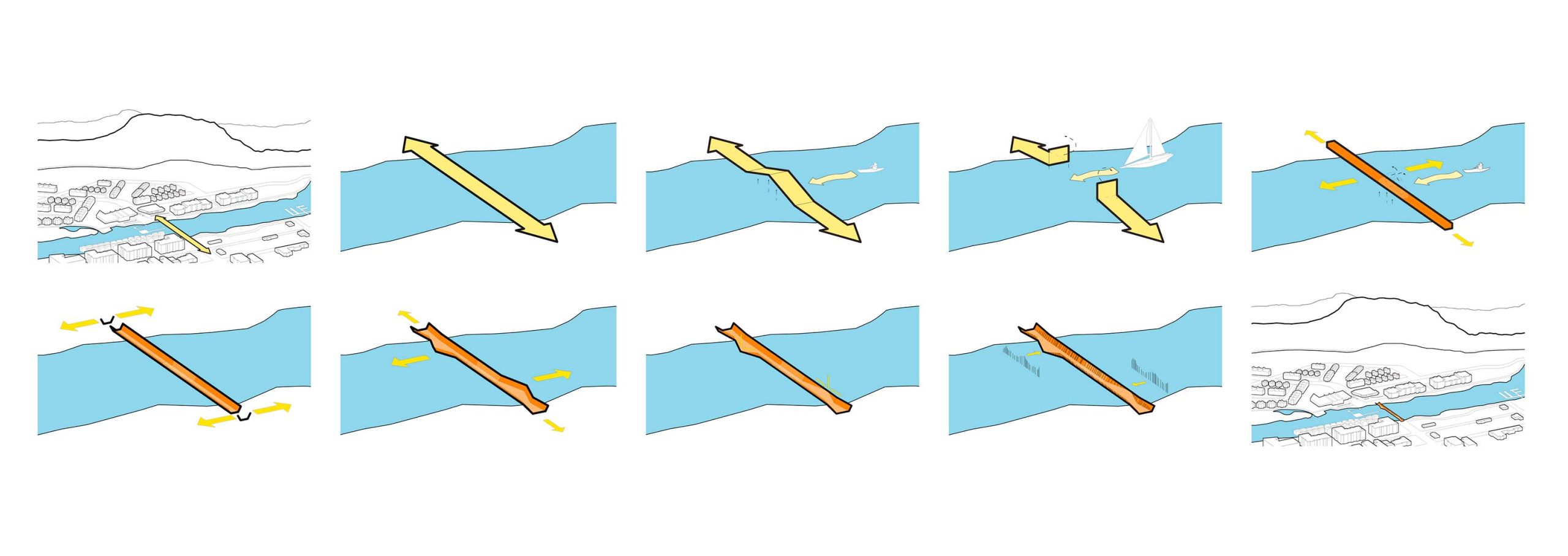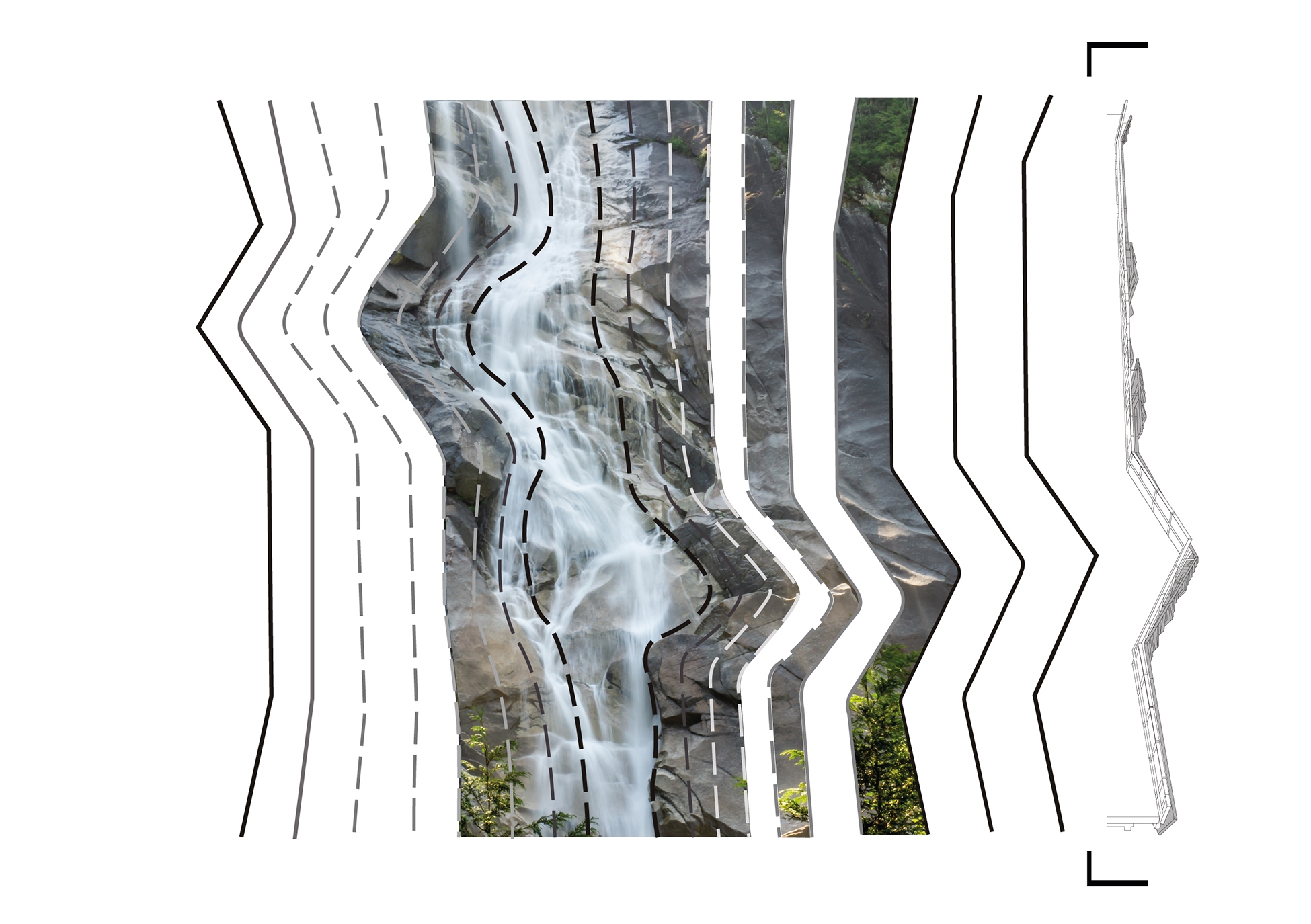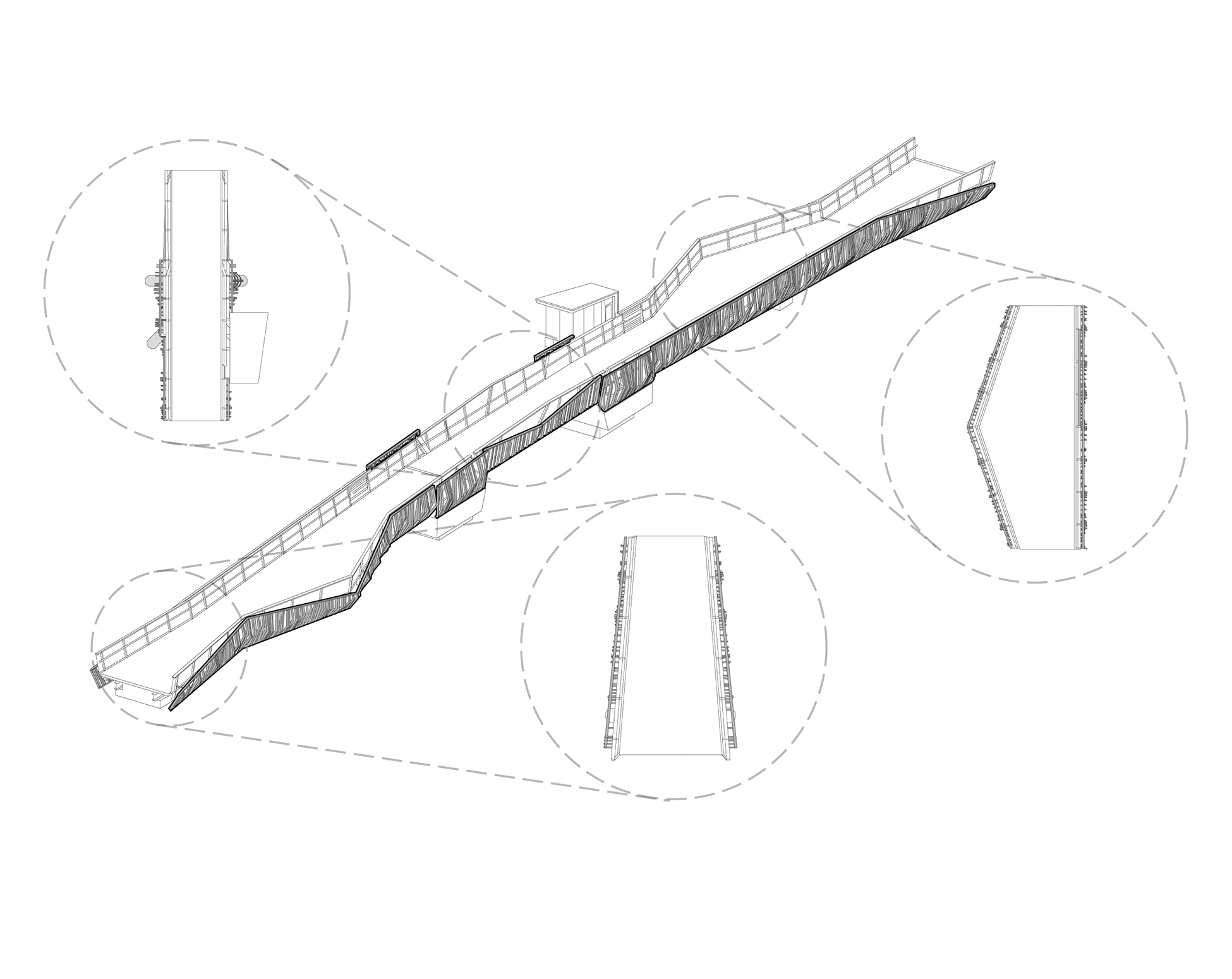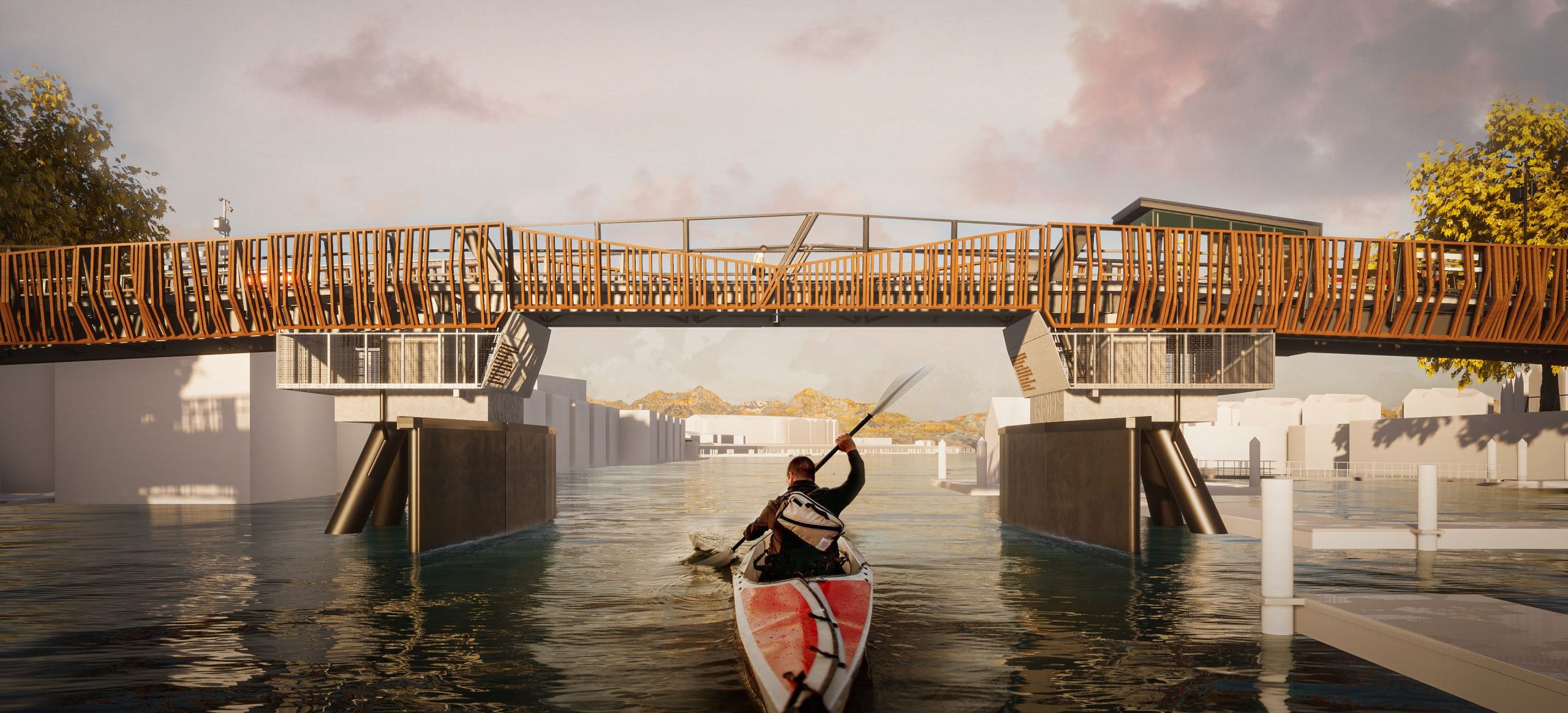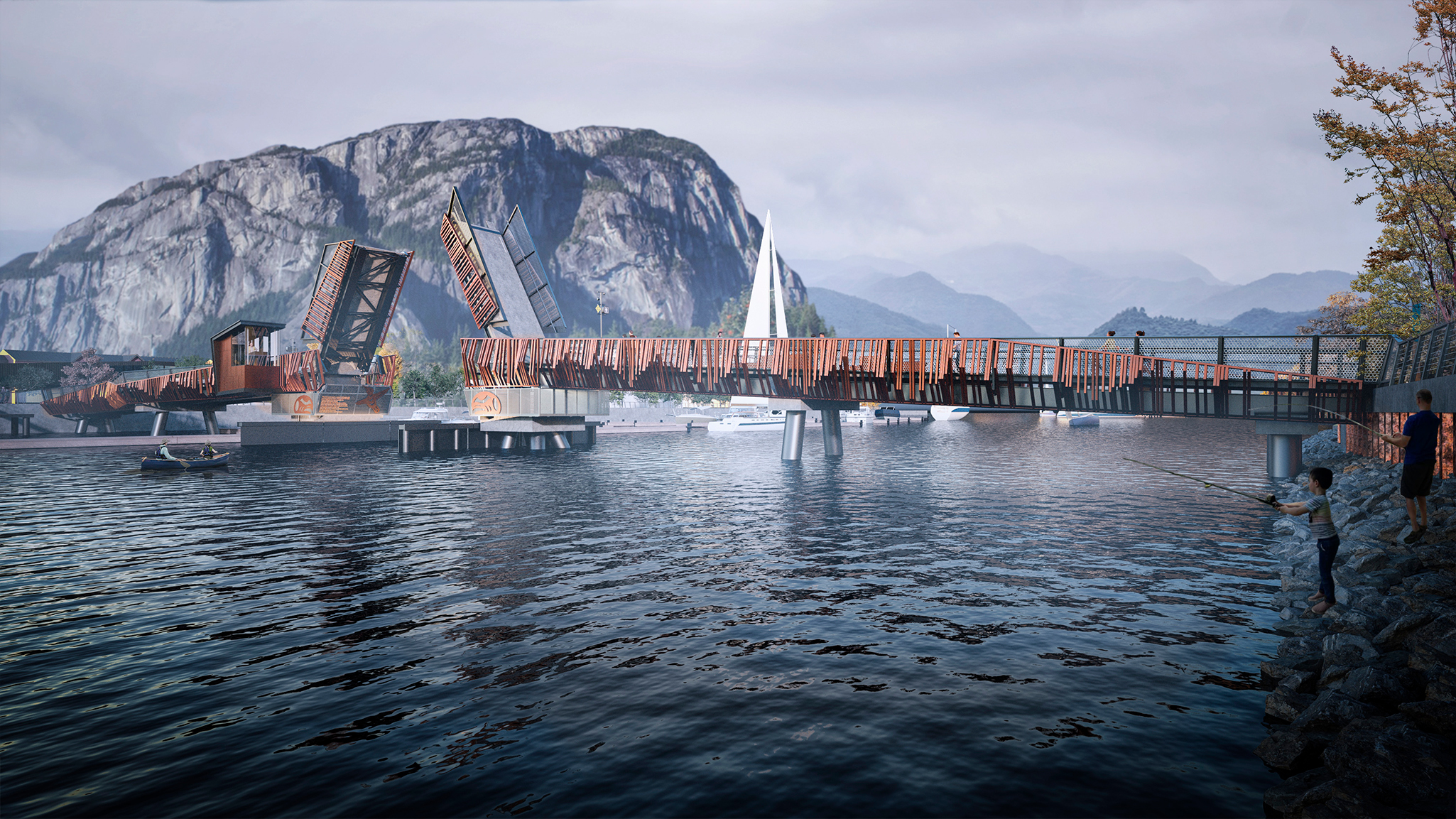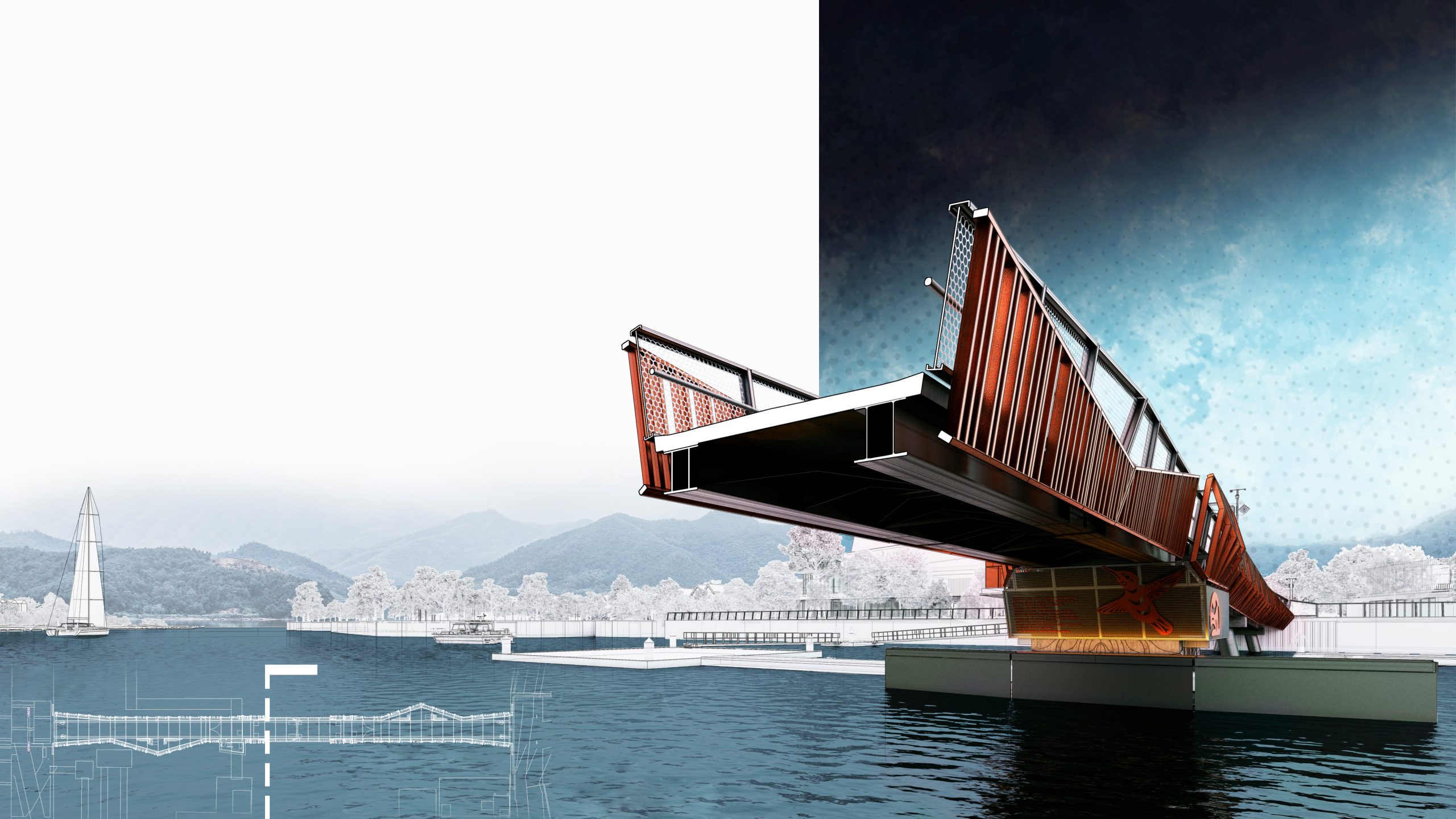Spanning the banks of the Mamquam Channel in Squamish (Stawamus/St’a7mes) BC
, the Squamish Pedestrian Bridge connects the edge of downtown with a developing residential community at the base of the legendary Stawamus Chief (Siám’ Smánit). A 700m high cliff-faced granite monolith iconic to the region. As part of a multi-phased housing project, the bridge provides a new circulation dynamic within the community to unite both sides of the channel without disrupting water vessel and sport navigation. A double drawbridge solution allows for continuous circulation; maintaining both pedestrian movement above and nautical traffic flow below.
Open at both ends, the pedestrian bridge is accessible, with inclusive design allowing barrier-free access for people of all mobility types
. Strategically placed lookouts lend a sense of permeability and provide places of respite and pause along the length of the bridge to enjoy sweeping mountain and ocean vistas.
The pedestrian bridge conceptually connects and references surrounding built and natural elements. Taking cues from local topography
, the morphology of the bridge conceptually references a rock gully in section. In elevation, it is enclosed by vertical slats that are inspired by the pattern of aggregated woodland trees. Fabricated from oxidized steel, these slats function as cladding, the intermittent rhythm of their spacing enhancing sightlines and evoking the vibrant colours and textures of a coastal rainforest at dusk. Further emphasizing view opportunities
, steel net railing infill acts as a safety barrier, embedding functionality and longevity into the bridge’s nature-inspired aesthetic. Interpretive design elements are also incorporated under the bridge deck, which double as protective barriers for mechanical systems.
Beyond a pathway that functionally connects both sides of the estuary neighbourhoods, the bridge offers layers of programmatic activity; an extension of the landscape, a community amenity, and a place for exploration and reflection.

